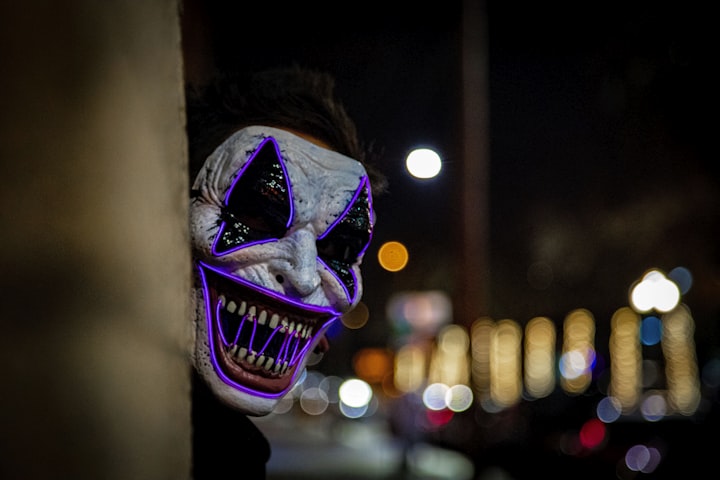The people we love to hate, secretly fear, and have to watch on our movie screens. They are among the vilest creatures ever concocted from a writer’s imagination.
In recent years they have been portrayed by immensely talented actors like Joaquin Phoenix as The Joker, and the late Heath Ledger in another depiction of the same role. Before that, Sir Anthony Hopkins terrorized cinema-goers as Hannibal Lecter in Silence of the Lambs, the convicted psychiatrist, serial killer, and notorious cannibal.
There are many outstanding female performances from Hollywood elite actresses like Bette Davis in What Ever Happened to Baby Jane?, Louise Fletcher as nasty Nurse Ratched in One Flew Over The Cuckoo’s Nest, and Kathy Bates portrayal of the unstable superfan Annie Wilkes in Misery, that cut us to the core.
Each of these performances is chilling in their own way, but what they lack is the very fabric of realism in a classic tale of good versus evil. There must be a believable foil of virtue and goodness to take the brunt of a villain’s wrath. Only then does either side have a right to claim a plausible verdict in the narrative’s outcome.
One performance above all others stands as a testament to the evil that lurks inside the human psyche. Strange then, that when awards seasons came around in 1962, this groundbreaking film was largely ignored, in fact, snubbed by cinematic mavens of the era.
Before the film’s release in 1962, it was subjected to some of the fiercest criticism and rejection from censors all around the globe. The subject matter was considered so harsh for unsophisticated audiences of the era, major scenes were forced to be cut by minutes, not mere frames.
The offending visuals of Hitchcock’s Psycho two years previous paled in comparison to the mere mention or inference of rape in J. Lee Thompson’s thriller, Cape Fear. Thus, when this motion picture hit the movie screens of America and abroad, Max Cady, the lead antagonist of Cape Fear, became the most fearsome and reprehensible characters in cinematic history.
Were it not for the casting of Robert Mitchum as Cady, this film would have perhaps been lost to obscurity in hands of a different actor. Other renowned actors like Rod Steiger, showed keen interest in the role, but to Executive Producer and star Gregory Pack’s credit, the choice of Mitchum would be a stroke of genius.
With himself cast as the protagonist Sam Bowden in this film, Gregory Peck cleverly pits the audience’s perception of good against the beastly portrayal of Max Cady by Robert Mitchum. After all, who is better than Atticus Finch, and who better to thwart the evil intentions of a criminal?
But, there is far more than just casting brilliance to make this performance memorable. It was Robert Mitchum’s self-professed acting style that makes all the difference in making his portrayal stand out. Though he was famously quoted as saying, “I have two acting styles: with and without a horse”, Mitchum really called on his colourful past to draw the energy necessary to make Max Cady a believable character.
“The only difference between me and my fellow actors is that I’ve spent more time in jail.”
It is the authenticity of his real-life experience that brings an edge to Max Cady in the original version of Cape Fear, setting him apart as the most sinister, and realistic movie villain of all time.
Tensions build quickly from the early scenes as Max Cady reveals the true nature of his capabilities as a vengeance-seeking criminal. His only goal is to satisfy his warped sense of justice on Sam Bowden, employing his only real strength, his animalistic whims and desires.
In the penultimate scene where Cady attacks Bowden’s wife, played with genuine aplomb by Polly Bergen, Mitchum unleashes raw, animalistic savagery never seen before by a film audience.
We can’t help but feel the palpable tension building as the entire scene was improvised for the camera. Yes, improvised. Polly Bergen falls into step to create a frantic dance of sheer terror with the menacing Mitchum, capturing a realism seldom experienced on film before or since.
So much so, that real blood is spilt, and real injury occurs during the making of this scene. Neither Mitchum’s cut hand, nor Bergen’s badly injured back will stop these two professionals from completing what may be the single most frighteningly genuine moments in movie history. When the couple are finally separated at the behest of Thompson, the film’s director and other crew members, Mitchum was reportedly devastated by what he thought he may have actually done to Polly Bergen.
In 1991, Martin Scorsese directed an appreciably acceptable remake of Cape Fear with Robert DeNiro starring as Max Cady. We are all aware of DeNiro’s ability to create a believable criminal persona. His portrayal of troubled characters like Travis Bickle in Taxi Driver, and even Rupert Pupkin in The King of Comedy. There are even glimpses of the latter in The Joker with Joaquin Phoenix, but there are distinct differences with DeNiro’s interpretation.
In the second Cape Fear, Max Cady is portrayed more as a calculating psychotic, a man with an agenda to wreak terror. Scorsese’s mastery of the disturbed is on full display as always, but in this version, the characters seem less whole as human beings.
Robert Mitchum’s Cady is an individual without moral or care in the world, except for satisfying his basest desires. That is exactly what makes Robert Mitchum so frightening. Throughout the entire movie, we have a real sense that this man can, and will ‘go off’ without a moment’s notice.
His unpredictability is the very thing that makes him so terrifying. Robert Mitchum played other villains during his movie career, but either with more studio infused restraints or stylistic differences. In Night of the Hunter, for example, Mitchum’s character, Harry Powell, is a deliberate exaggeration, based on themes of German Expressionism that director Charles Laughton wanted to experiment with.
With Max Cady and Cape Fear, the director’s allegiance to Film Noir principles allows for performances that are literally stripped bare and exposed to the light for an unsuspecting audience to endure at their peril.
Robert Mitchum as Max Cady represents the essence of evil that lurks inside the human spirit.
This story originally appeared on Medium by Stuart Englander
I hope you enjoyed reading it.
All tips are gratefully accepted for the future of my musings.
Please follow me on Twitter, LinkedIn, and Quora
About the Creator
Stu E
Every Life is a Story-Every Story has a Life. I love to write stories to inspire. Biographies, film reviews, and a touch of humor. Life is for learning, always.







Comments
There are no comments for this story
Be the first to respond and start the conversation.